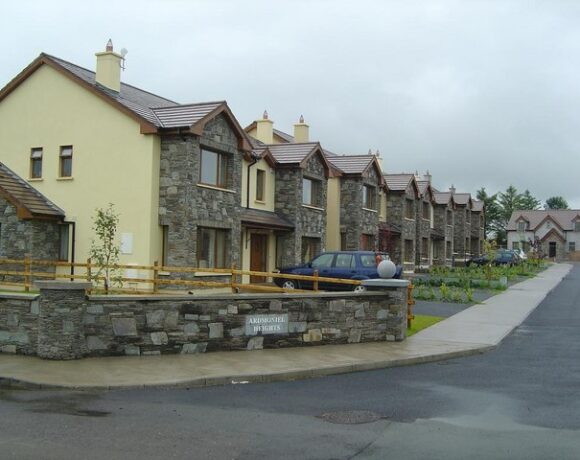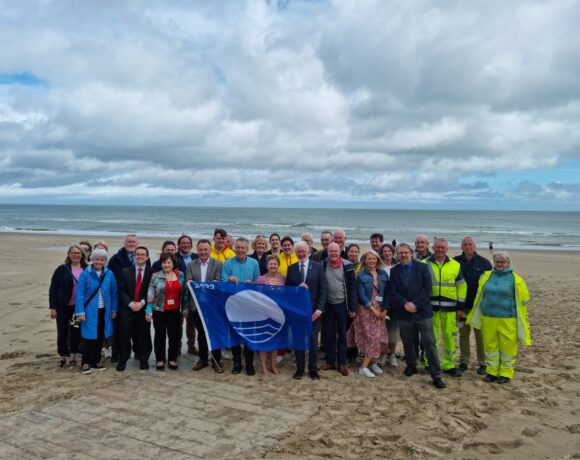The world’s population is set to reach a staggering 8.6 billion within ten years, two-thirds of which is expected to be living in urban areas and cities. This growth means the significance of powering smart cities is more relevant than ever.
As population density grows, so too does the number of smart devices, estimated to number 75 billion by 2025.
As we become more connected and densely populated, society and the surrounding environment will be forced to change. Governing bodies are already having to completely rethink public services and become more data-centric.
Smart cities represent a major opportunity for change, and how we plan on powering smart cities is significant. With analytics, robotics and Internet of Things (IoT) sensor technology, data is being produced at an unseen scale. Today, the responsibility falls on the government to collate data, interpret behaviours and optimise infrastructure accordingly.
While greater connectivity opens up greater efficiencies – from easing congestion and smoothing traffic flow, to breathing cleaner air – it must be harnessed effectively for benefits to be realised.
Easing Congestion
As urban centres become more congested, smart city technology can alleviate pressure on creaking infrastructure, boosting efficiency and improving lives.
Transport is one of the great dilemmas of modern times – our economy needs mobility to flourish, but most transport networks were not designed with modern requirements in mind.
Space and time (“geotemporal”) data incontrovertibly has the potential to drive innovation. However, data alone isn’t valuable – we must be able to interpret and analyse it in real time. That’s where a hyper-spatial data platform comes in – pulling together multi-modal mobility data from a mass of sensors allows behavioural analysis with greater depth and accuracy.
For example, pedestrian data can be queried alongside traffic flows and building uses, showing busy areas but also revealing the cause. This can then be used to inform services, from changing public transport frequency and street lighting to moving public services or adapting a building’s use. Visualising data holistically is vitally important. Doing so allows city planners to identify issues and implement changes effectively.
With data insights, local governments are able to build an accurate picture of how to optimise travel routes and town planning. In turn, this makes for far smarter, more sustainable cities that are able to accommodate populations both now and in the future.
Cutting Emissions
A priority for cities in the years to come will be reducing air pollution levels. This is already a major concern – nine in ten people breathe polluted air resulting in seven million deaths every year, according to the World Health Organisation. As city populations and traffic volumes boom, the role of smart technology in tackling pollution will be crucial.
While data on emissions and congestion has been available for some time, only recently have we been able to build a full picture of its reach and harm. Fusing data from various sources can reveal new insights to be used to manage energy use and minimise pollution. For example, IoT sensor technology can intelligently detect when there is little or even no pedestrian or road traffic, dimming streetlights autonomously and saving energy.
By crunching vehicle rates in real time, as well as pressure, temperature and humidity, air quality levels can be accurately predicted and mapped. This provides the insight to proactively adapt traffic controls and mitigate harm.
Learning From Others
As always, the smart move is to analyse and adopt best practices from other cities and nations. Singapore, for example, is generally considered to be the global smart city leader, much due to significant government investments in digital innovation and connected technologies. By creating GovTech and the Smart Nation Singapore initiative, the city-state has been able to tackle a range of urban issues in relation to high-density living. Crucially, these bodies are tasked with bringing together technologies and data from different government agencies to act as a cohesive unit that works in the common interest.
Through its strategic investments, Singapore has become home to a number of data-supported innovations, from e-payments to autonomous shuttles and driver-less taxis. Public sector organisations have long been encouraged to pursue smart initiatives that benefit inhabitants. Singapore’s Land Transport Authority, for example, entered into research with IBM Watson Lab over 10 years ago to use analytics to understand traffic flows and ensure bus arrival predictions were more accurate.
Since then, efforts to make the Smart Nation mindset become more tangible for Singapore’s citizens have been helped by partnerships spanning the private sector as well as the public sector. The popular ride hailing app Grab, for example, puts machine learning at the heart of its development strategy, collecting millions of rows of GPS location data every few seconds from apps such as GrabHitch, GrabShare and GrabTaxi.
Planning Ahead
All cities require significant infrastructure change to meet the challenges ahead. Fundamentally, this requires revolutionary policies to enable the powering smart cities
Over previous generations, infrastructure has been developed independently – siloed projects which lack a single unified vision. Smart cities, by their nature, require a cohesive approach – only by crunching every available data point can a city be truly optimised.
While the process of bringing all public datasets together to create this holistic view will take some time, there are systems that must be in place today. Data is ultimately useless if there isn’t a platform in which it can be queried quickly, efficiently and affordably. This backend information hub acts as the backbone to all smart cities and cannot be overlooked.
Bringing geotemporal data to life can provide valuable perspectives for governments to meet the needs of a growing population. To ensure this, the citizen experience must be put at the heart of digital innovation in smart city architectures. However, time is of the essence. The sooner we can create a platform able to ingest the vast amounts of data, the sooner policy makers can act decisively to improve the quality of our lives.
Source: Tech Native













